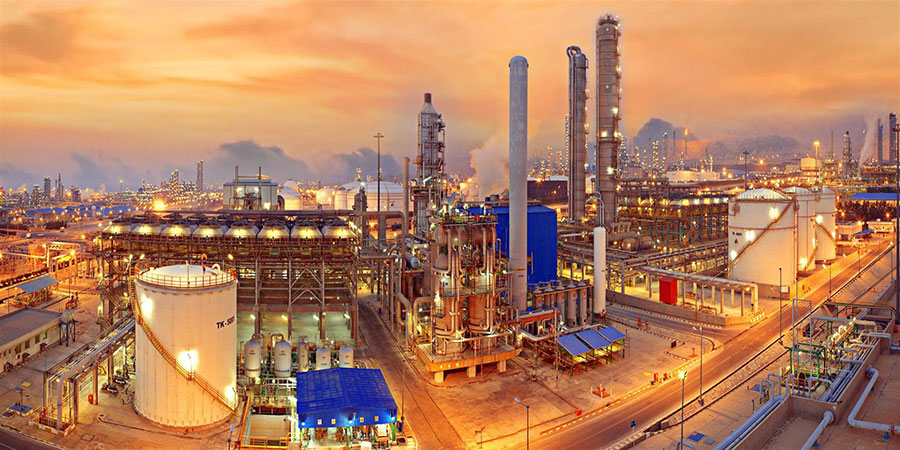History of the petrochemical industry of Iran
The idea of creating the petrochemical industry in Iran is more than 50 years old. In the texts and laws of the 1950s, provisions, and terms such as “Chemical industries derived from oil” or “chemicals derived from oil and natural gas” either “gas derivatives” and “chemical fertilizers” were adopted Without the word “petrochemical” being used.
The first article of association of Iran National Oil Company approved on November 26, 1952, mentioned establishing a company named National Iran Oil Company for exploration, extraction, and exploitation such as refining, transportation, export, and distribution of oil and its derivatives.
In the bill of the second construction program, credits for the formation of chemical fertilizer factories were predicted and the first step in the establishment of petroleum chemical industries in Khuzestan was taken in June 1958.
In the report of June 1960 of the Khuzestan Development Program, the title “Petrochemicals” was mentioned for the first time.
At the end of the 1950s, the Ministry of Industries and Mines paid attention to the construction of a chemical fertilizer plant from natural gas in Marvdasht, Fars. In 1958, the contract for the construction of the factory was signed and its implementation was entrusted to “Chemical Fertilizer Company“. This factory was put into operation in 1963.
History of the petrochemical industry of Iran
In 1964, the law on the formation of the National Petrochemical Industries Company under the cover of the National Iranian Oil Company and the concentration of all activities related to the creation and development of petrochemical industries in this company was approved. In 1965, the Petrochemical Industries Development Law was also ratified.
The petrochemical industry in Iran has about 9% of the world’s oil reserves and 16% of the world’s gas reserves, due to the use of the country’s relative advantages and the creation of added value, has been the focus of the country’s policymakers and planners since the beginning. Although the development of this industry requires huge capital and educated manpower, its importance in the growth of the national economy has paved the way for the expansion of this industry.
The process of development and evolution of the petrochemical industry in Iran includes six specific stages:
- Genesis (1963)
- Initial expansion (1964 to 1978)
- Recession (1978 to 1988)
- Revival and reconstruction (1989 to 1999)
- Mutation, stabilization, and development (1999 to 2008)
- Privatization and transformation into governance and regulatory organization (2009-till now)
1- Genesis stage of the petrochemical industry
The Ministry of Industries and Mines, in its report of 1959, announced the establishment of a chemical fertilizer company affiliated with this ministry in Marvdasht, Shiraz, and stated: “Shiraz chemical fertilizer factory will start working in the spring of 1961.”
The Ministry of Industries, with the help of the National Oil Company, was able to open the Shiraz Chemical Fertilizer Factory on the morning of Friday, October 18, 1963, in the presence of the King and General de Gaulle, the President of France and the lady, and its inscription was unveiled.
The proposal of the “Supreme Council of Petrochemical Industries” was approved by the Board of Ministers on December 18, 1963, Iran’s National Petrochemical Industries Company was established on December 27, 1964, and Engineer Bagher Mostofi was appointed as the first chairman of the company’s board of directors and remained in this position until the revolution.
2- Initial expansion of the petrochemical industry in Iran
Reviewing of the plans that had to be chosen for the production of petrochemical products began after the establishment and organization of the company. the development of this industry continued until the victory of the Islamic Revolution. For a long time, the company’s production plant was the chemical fertilizer product of Shiraz, which was assigned to the company. The first service company established by the National Iranian Petrochemical Industry Company was “Chemical Fertilizer Distribution Company“, which was responsible for the sale of Shiraz chemical fertilizer products, in addition to importing the required fertilizers and selling them inside the country.
Before the 1979 Islamic Revolution, the development of the Iranian petrochemical industry was formed within three construction programs. Accordingly, from 1964 to 1977, the production of chemical fertilizers using petroleum gases, as well as new products such as carbon black, sulfur, liquid gas, caustic soda, carbonate, sodium bicarbonate, PVC, and plasticizers (DOP) was implemented in order to meet Iran’s domestic needs.
The company’s studies and negotiations with companies with technical knowledge and investors led to the construction of Razi petrochemical complexes (former Shahpur), Abadan, Pazargad, Carbon Ahvaz, Kharg, Farabi (former Nippon Iran), and petrochemical development plans in Shiraz and The completion of a major part of the Petrochemical construction of Bandar Imam (former Iran, Japan) was the result of the efforts of this period.
3- Recession of the petrochemical industry
The petrochemical recession in Iran began in 1978. During this period, the country was involved in the strikes of the victory years of the Islamic Revolution, economic blockade, political and social clashes, and reflections caused by the Islamic Revolution, for these reasons the company did not reach its set goals.
During the imposed war, the main activities of the National Petrochemical Industries Company were supporting the fronts of the imposed war, as well as the design and engineering stages, procurement, and land preparation of the Arak and Isfahan complexes.
Following the problems caused by the imposed war, the production activities of the company were also reduced to a minimum. Petrochemical projects of Imam Port were activated at times, however, due to special political and economic conditions, they were stopped.
During this period, petrochemical industries, such other oil industry facilities, were often under attack. The two petrochemical complexes of Abadan, Razi, and then the Petrochemical Project of Bandar Imam (Iran-Japan) were repeatedly exposed to enemy bombings more than other petrochemical complexes. The only major activity in this period was the completion of the Shiraz Petrochemical Development Plan.
In the meanwhile, the only units that were still active were Shiraz, Abadan and Polika, Razi, Khark, Pazargad Chemical, Farabi, and Iran Carbon factories.
4- Revival and reconstruction
With the signing of Resolution 598, a diligent effort was started to rebuild and modernize the complex and production units, in a short period, the company was able to put most of these units back into production, in addition to focusing on the reconstruction and renovation of units damaged in the war.
The implementation of the first development program of the Islamic Republic began in the years 1989 to 1995 and the reconstruction of the damaged complexes was put into operation. At the same time, the operation of a number of the basic plans of the company, including the Isfahan Petrochemical Complex, Arak Petrochemical Complex, and the completion of the Bandar Imam Complex began.
Subsequently, in the second five-year development plan in the years 1996 to 1999, by exploiting the remaining plans from the first five-year plan, the annual production of petrochemical products reached 2.4 to 11 million tons per year.
5- Mutation, stabilization, and development
This stage started in 2000. During this time, based on the experiences gained from the implementation of the first and second plans, with the implementation of the third and fourth five-year plans, the construction of numerous projects began.
Among them are the petrochemical complexes of Tabriz, Urmia, Khorasan, Buali Sina, Khuzestan, Biston, Fan Avran, Amir Kabir, Shahid Tondgoyan, Maron, Pars, Zagros, Aria Sasol, Nouri (Barzoea), Pardis, Jam, Kermanshah, Laleh, Karun, and Mehr were produced. In addition, activities such as optimal use of existing capacities, development of exports, promotion of petrochemical position in non-oil exports, and expansion of privatization activities were considered.
6- Privatization and transformation into governance and regulatory organization
The preparations for the stage of privatization and transformation of the National Petrochemical Industries Company into governance and the regulatory organization began in 2007 with the notification of the executive policies of principal 44 of the Constitution and several companies and complexes were handed over to the private sector separately.
However, with the formation of the Petrochemical Holding Company, including the rest of the complexes and companies that have not been assigned, it was approved in 2009 for the simultaneous transfer to the private sector and the continuation of the activity of the National Petrochemical Industries Company in the form of governance and regulatory organization.
We at Iran Petroleum are by your side to supply the highest quality and rarest Iranian petrochemical products. Our professional consultants will accompany you in this way.








Leave a Reply